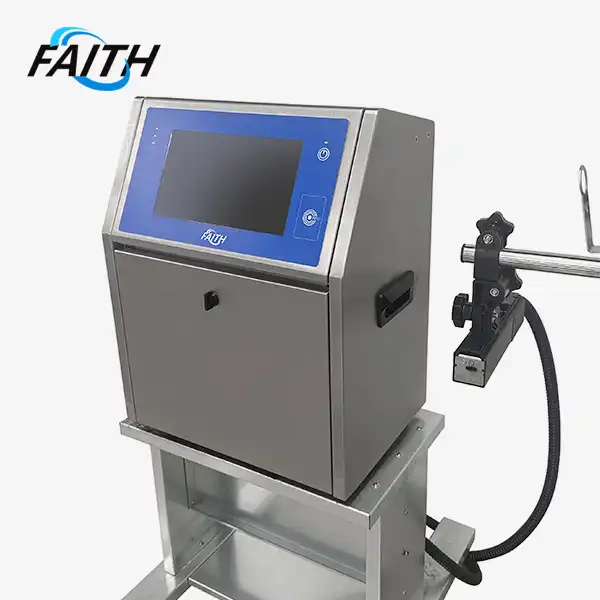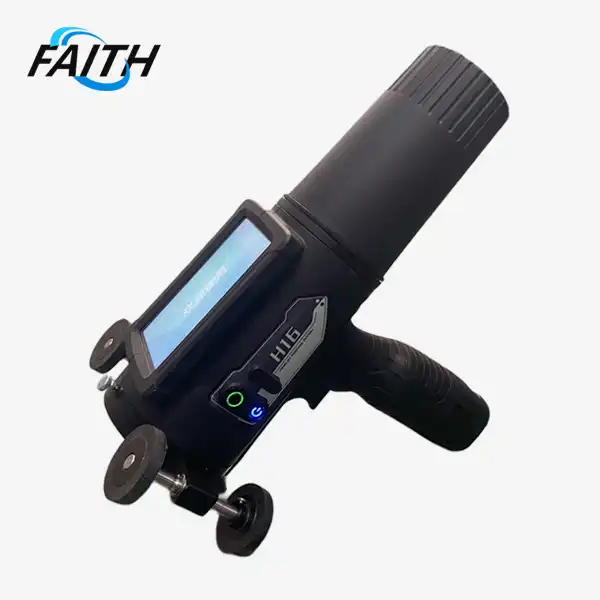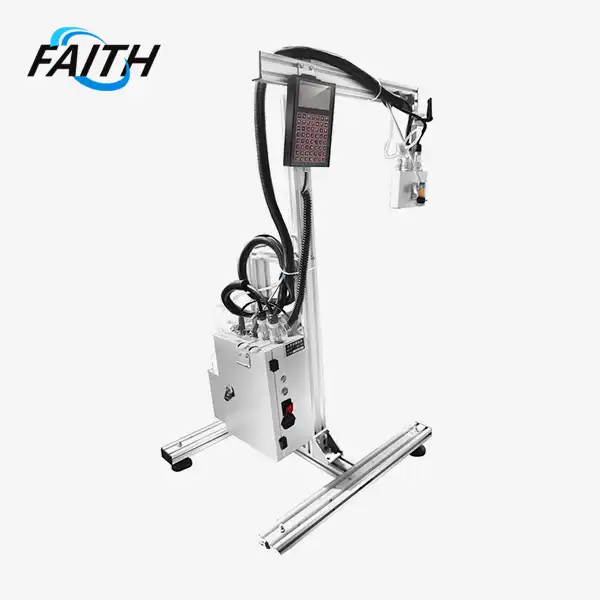How does a continuous inkjet printer work?
Continuous inkjet printing technology has revolutionized the way industries mark and code their products. From food and beverage to pharmaceuticals, electronics to automotive parts, this versatile printing method offers speed, reliability, and adaptability across various materials. Continuous inkjet (CIJ) printers are a cornerstone of industrial coding and marking solutions. Their ability to print on diverse substrates at high speeds makes them indispensable in modern manufacturing environments. Whether you're a production manager seeking to optimize your line efficiency or a quality control specialist ensuring regulatory compliance, understanding CIJ technology is crucial. In this comprehensive guide, we'll delve into the inner workings of continuous inkjet printers, exploring their components, processes, and advantages.

The Core Principles of Continuous Inkjet Printing
At its heart, continuous inkjet printing technology operates on a deceptively simple principle: the continuous generation of ink droplets. Unlike other printing methods that produce drops on demand, CIJ systems create a constant stream of tiny ink droplets, some of which are directed onto the printing surface while others are recycled back into the system.
The process begins with a high-pressure pump that forces ink through a microscopic nozzle, creating a jet of liquid. This jet is intentionally disrupted at a specific frequency, typically using a piezoelectric crystal, which causes it to break into a stream of uniformly sized and spaced droplets. These droplets are then charged electrically as they pass through a charging electrode.
The magic happens in the next stage, where charged droplets pass through an electric field created by deflection plates. Depending on their charge, droplets are either deflected onto the printing surface or into a gutter for recirculation. This selective deflection allows for precise control over droplet placement, enabling the creation of characters, logos, and barcodes at high speeds.
One of the key advantages of this system is its ability to operate continuously. The recycling of unused ink droplets ensures minimal waste and allows for extended periods of operation without interruption. This continuous flow also helps prevent nozzle clogging, a common issue in other inkjet technologies.
Components and Technology Behind CIJ Systems
To truly appreciate the ingenuity of continuous inkjet printing technology, it's essential to understand its key components:
- Ink System: This includes the ink reservoir, filters, and pumps that maintain a constant flow of ink to the printhead.
- Printhead: The heart of the CIJ system, containing the nozzle, charge electrode, and deflection plates.
- Nozzle: A precision-engineered orifice that creates the initial ink stream.
- Piezoelectric Crystal: Vibrates at high frequencies to break the ink stream into droplets.
- Charge Electrode: Applies an electrical charge to selected ink droplets.
- Deflection Plates: Create an electric field to direct charged droplets.
- Gutter: Collects and recirculates unused ink droplets.
- Control System: Manages the entire printing process, including droplet formation, charging, and deflection.
The synergy between these components allows CIJ printers to achieve remarkable printing speeds and precision. Moreover, the technology behind CIJ printers has evolved to include sophisticated features such as automatic viscosity control, which ensures consistent print quality regardless of environmental conditions. Self-cleaning systems and modular designs have also improved reliability and ease of maintenance, addressing key concerns for industrial users.
Applications and Advantages in Industrial Settings
The versatility of continuous inkjet printing technology makes it an ideal solution for a wide range of industrial applications. Its ability to print on various substrates, including plastics, metals, glass, and even textiles, coupled with its high-speed capabilities, has made it a staple in many production environments.
In the food and beverage industry, CIJ printers excel at applying date codes, lot numbers, and barcodes on packaging at high speeds. The pharmaceutical sector relies on CIJ for precise, tamper-evident coding that meets stringent regulatory requirements. Electronics manufacturers use CIJ to mark small components with serial numbers and product codes, taking advantage of the technology's ability to print on curved surfaces and in tight spaces.
The advantages of CIJ extend beyond its versatility:
- Speed: CIJ printers can keep pace with even the fastest production lines, printing clear codes without slowing down operations.
- Non-contact printing: Since the printhead doesn't touch the product, CIJ is ideal for freshly packaged goods or delicate surfaces.
- Durability: CIJ inks are formulated to adhere to a wide range of materials and resist fading, smudging, and environmental factors.
- Cost-effectiveness: The continuous ink recycling system minimizes waste, making CIJ an economical choice for high-volume printing.
- Flexibility: Easy to integrate into existing production lines and adaptable to changing coding requirements.
For industries dealing with traceability concerns, such as automotive parts manufacturing or aerospace, CIJ offers the ability to print high-quality, durable codes that withstand harsh environments. The technology's adaptability also shines in the wire and cable industry, where continuous marking along the length of products is required.
As regulations around product identification and traceability continue to evolve, the importance of reliable, high-quality coding solutions grows. Continuous inkjet printing technology remains at the forefront, offering the speed, precision, and versatility needed to meet these challenges head-on.
Understanding the intricacies of how continuous inkjet printers work is crucial for anyone involved in industrial marking and coding. From the fundamental principles of droplet generation to the sophisticated control systems that ensure precise placement, CIJ technology represents a pinnacle of engineering in the printing world.
Conclusion
Whether you're looking to upgrade your existing coding system or exploring options for a new production line, continuous inkjet printing offers a robust, flexible solution capable of meeting a wide array of industrial needs. Its ability to deliver high-speed, high-quality coding across diverse materials makes it an invaluable tool in today's fast-paced manufacturing landscape.
For more information on how continuous inkjet printing technology can benefit your specific application, or to explore our range of industrial UV inkjet coding and traceability system solutions, please don't hesitate to contact us at sale01@sy-faith.com. Our team of experts is ready to help you find the perfect coding solution for your needs.
References
1. Hoskins, S. (2013). "The Handbook of Inkjet Technology: How Technology is Revolutionizing Printing and Imaging." Wiley-VCH.
2. Magdassi, S. (2009). "The Chemistry of Inkjet Inks." World Scientific Publishing Company.
3. Wijshoff, H. (2010). "The dynamics of the piezo inkjet printhead operation." Physics Reports, 491(4-5), 77-177.
4. Hoath, S. D. (Ed.). (2016). "Fundamentals of Inkjet Printing: The Science of Inkjet and Droplets." John Wiley & Sons.
5. Hutchings, I. M., & Martin, G. D. (Eds.). (2012). "Inkjet Technology for Digital Fabrication." John Wiley & Sons.
Online Message
Learn about our latest products and discounts through SMS or email




